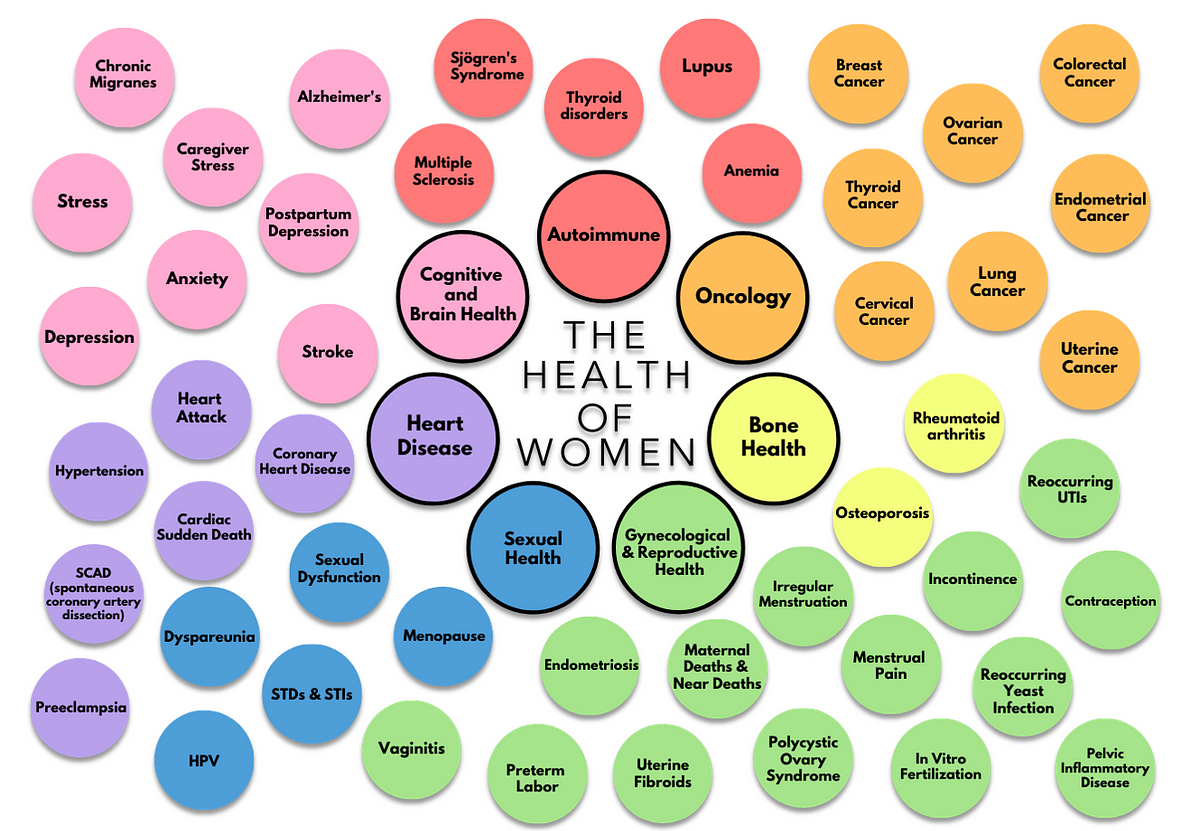
Health Equity, Diversity and Inclusion
The Time is Right to Invest in Women’s Health
How Trustees can take focused action on improving the quality of women’s health care
By Priya Bathija
The World Economic Forum identified the investment in improving women’s health as vital to creating a “healthier, more equitable world for all.”
Its research suggests that a $300 million investment into research focused on women could generate a $13 billion economic return and lead to reduced health care costs, better quality of life, and years of productivity returned to the global workforce.
Along with similar research that confirms the connection between women’s health and long-term productivity, this highlights the importance of investing in women’s health. Investing in women is also an investment in families, communities, and society.
Hospitals and health systems have a significant opportunity to improve women’s health and trustees can play a role in those efforts.
What is Women’s Health?
The discussion around women’s health is often limited to gynecological and reproductive health. But women’s health encompasses far more.
There is no universal definition for women’s health. The National Institutes of Health defines it broadly as health issues that are unique to women as well as conditions that affect both men and women, but that may affect women differently. Others have defined it as the branch of medicine that focuses on the treatment and diagnosis of diseases and conditions that affect a woman’s physical and emotional well-being.
To illustrate the breadth of women’s health, Springboard Enterprises created a framework that identifies seven categories of women’s health and the diseases and conditions included in each category. For example, oncology is a key aspect and includes cervical, ovarian, thyroid, breast, lung, colorectal, and uterine cancers.
Women’s health has also been defined to include more than just medical conditions. Earlier this year, New York City Mayor Eric Adams announced that the city was implementing new initiatives to become the model for the future of women’s health care.

Springboard Enterprises’ Women’s Health Innovation Program, The Framework of Women’s Health, available here.
The city’s definition of women’s health includes the ability for each woman to be able to live life on her own terms. When viewed from that perspective, improving women’s health also includes addressing gender pay gaps, childcare responsibilities, and the many laws, policies and workplaces that are unfriendly toward women’s health.
Why Women’s Health?
Many often ask why women’s health, instead of just health? There are many reasons to focus on the unique needs of women.
Men and women have biological differences at the molecular and cellular level. The science of medicine has historically failed to consider the impact of sex on the prevention, diagnosis, and treatment of disease. As a result, we do not always have a full understanding of how medications and treatments work on women’s bodies.
There are also medical conditions that only exist in women, exist mostly in women, and that present differently in women. Endometriosis, polycystic ovarian syndrome, and cervical cancer only exist in women. Breast cancer, lupus and multiple sclerosis appear mostly in women. Other conditions like diabetes and asthma appear differently in women.
Heart disease, and specifically heart attacks, also can appear differently in women. While women’s most common heart attack symptom is chest pain or discomfort, women are more likely than men to experience shortness of breath, nausea/vomiting, and back or jaw pain when having a heart attack. Yet, research shows that when women present with these symptoms, they face longer wait times in emergency departments, are less likely to be admitted to the hospital, receive less thorough evaluations, and are less likely to be administered tests to detect cardiac problems.
In addition, women experience health challenges simply by existing within a system that was designed by and for men. For example, women health care providers are regularly put at higher risk due to ill-fitting personal protective equipment, which is manufactured for the standard U.S. male face shape. Women also face higher risk of injury and death in car crashes, because safety testing is done on male test dummies.
Investing in Women’s Health
Hospitals can and are investing in women’s health in a variety of ways. Examples include:
Building new care models. Kaiser Permanente Georgia developed the Cocoon Care Program to reduce maternal morbidity and mortality. Pregnant women are surrounded by a safety net of support, including primary, maternal, and specialty care physicians, dietitians, behavioral health clinicians, nurses, and social workers, which address their physical, mental, and social needs through every stage of pregnancy.
Designing new solutions. riskLD, a labor and delivery risk management tool, was developed using proprietary technology invented at University Hospitals. This tool runs on algorithmic situational analysis and provides clinical decision support to labor and delivery teams to reduce birth malpractice losses.
Partnering with other organizations. CommonSpirit, UCSF Health, and Cedars-Sinai have partnered with Tia to provide in-person and virtual care for women’s physical, mental, and reproductive health. In addition, Cleveland Clinic has partnered with the Women’s Alzheimer’s Movement to explore the connection between female biology and health experiences and how these factors affect women’s risk for developing neurological diseases.
Investing in women’s health startups. Atlantic Health System, Banner Health, Froedtert Health, University Hospitals, WellSpan Health, and others have financed Babyscripts™, a platform designed to connect expectant mothers with doctors and resources to improve perinatal outcomes. Providence Ventures invested in Wildflower Health, a women’s health solutions company, specializing in digital and value-based care.
Designing policies and benefits that support the health of women in the workforce. While these have the potential to range from equal pay, flexibility, and paid parental leave (for both parents), today, 48 percent of organizations with 5,000 or more employees provide at least one specialized benefit or resource to support reproductive health. That includes benefits that support high-risk pregnancies, lactation, pre-conception family planning, pregnancy loss, and menopause.
Trustee Takeaways
Boards can ask the following questions to enhance their discussions about women’s health:
- What are the demographics of the women our hospital serves?
- What health disparities and inequities exist for women in our community? What challenges do they have? What care are they not able to access?
- What steps can our organization take to address these disparities and inequities?
- What organizations can we collaborate with to improve women’s health?
- How can this work be incorporated into our strategic plan?
- How will we assess progress on women’s health?
Trustees Role in Improving Women’s Health
There are many steps trustees and boards can take to improve women’s health. The first step, however, is elevating this issue in the boardroom and as a strategic priority for their organizations.
In addition to highlighting the need to improve women’s health, trustees can also make a business case for prioritizing women’s health. Women are the most important health care consumers. Today, women make up slightly more than half of the population and, as individuals, consume more health care resources than men. Women are also the primary health care decision maker for themselves and their families – making more than 80% of health care spending decisions.
Trustees can also use community and local data to identify opportunities for improvement. They can then guide hospital leaders as they develop and implement strategies to improve care provided to women. There are many strategies that can be implemented; however, it will be critical to align this work with the needs of the hospital’s patients and the communities it serves. Trustees can also help identify goals and metrics that will be used to track progress and measure overall success.
Trustees can guide the hospital’s work to reduce inequities in women’s health, including promoting tailored strategies to fight racism and sexism. Trustees can encourage board members, hospital leadership and care teams to receive implicit bias training. In addition, they can encourage education on medical gaslighting to ensure women’s conditions are not dismissed or minimized by health care providers.
Last, trustees can be champions for women’s health. Trustees can educate, eliminate stigma and taboos, and normalize conversations around all aspects of women’s health – including menstruation, sexual health, and menopause. Creating opportunities for dialogue on these issues will help drive collaboration and increase efforts to improve women’s health.
Priya Bathija, J.D., MHSA (pbathija@nyoohealth.com) is founder and CEO of Nyoo Health, which focuses on improving access to health and health care for women.
Please note that the views of authors do not always reflect the views of AHA.
